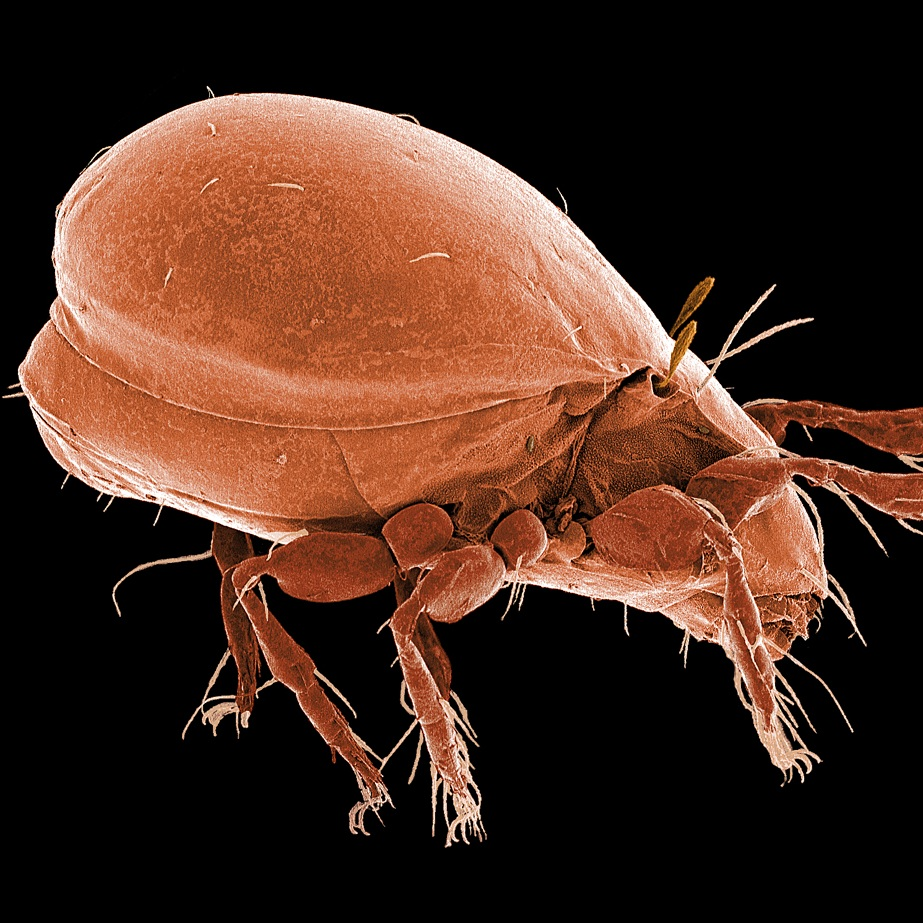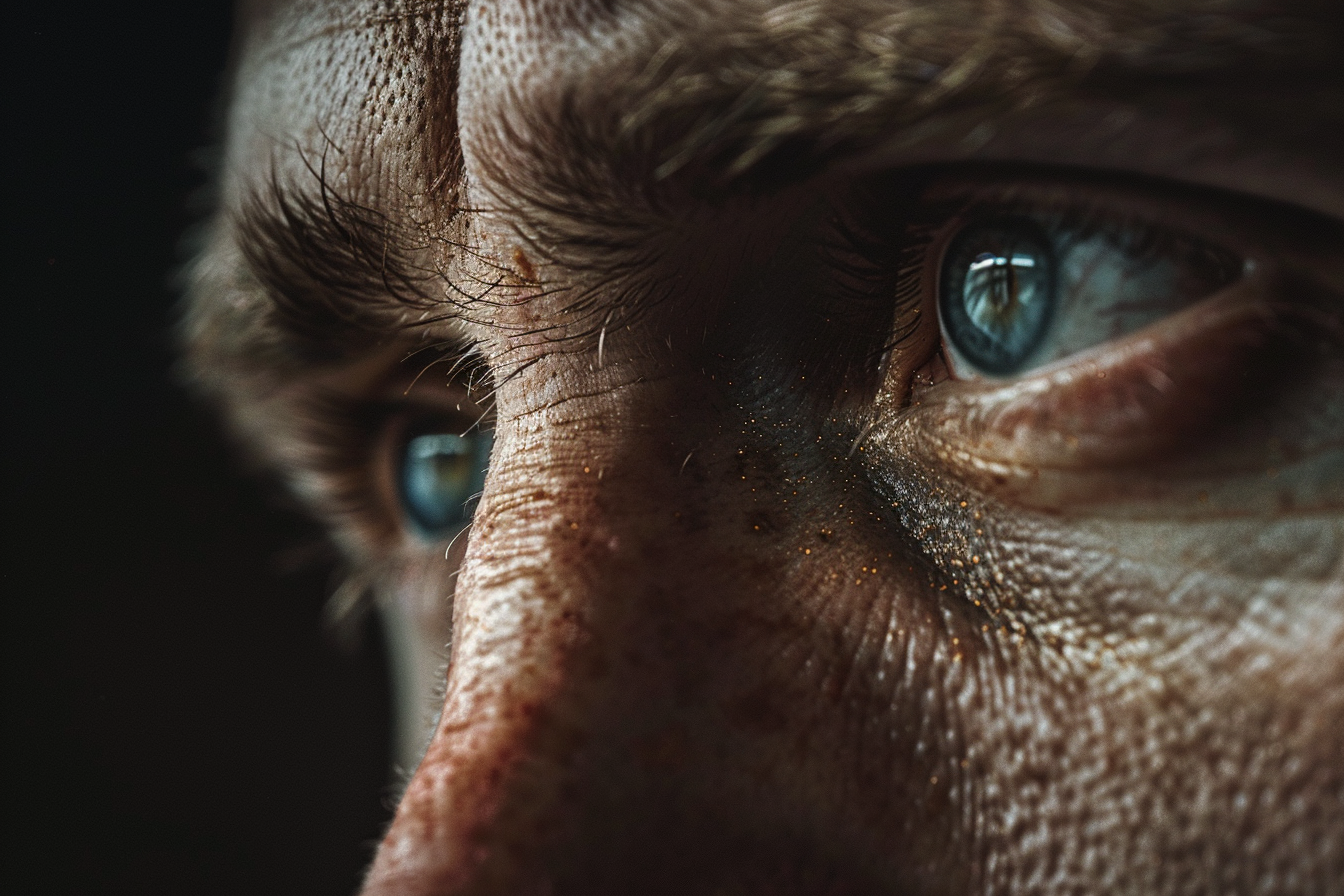If I asked you to name the strongest animal on Earth, you’d probably think of something huge and powerful like an elephant, lion, or even a bear, right? But what if I told you there’s an animal smaller than a grain of sand that can put all these mighty creatures to shame? Sounds unbelievable, doesn’t it? Well, believe it or not, it’s absolutely true! Meet the oribatid mite—a microscopic powerhouse that lifts loads that would crush even the strongest humans.
Let’s dive deeper into this tiny yet incredibly strong creature and discover exactly how it manages such amazing feats.
Meet the World’s Strongest Animal: The Oribatid Mite

Oribatid mites aren’t exactly celebrities in the animal kingdom. You probably haven’t even heard of them before today. These tiny creatures weigh less than 25 micrograms—that’s smaller and lighter than the grains of sand you casually brush off your hands at the beach. Yet, despite their minuscule size, oribatid mites pack a muscular punch that’s simply extraordinary.
Scientists have observed these microscopic creatures lifting objects up to 1,180 times their own body weight. To put this into perspective, imagine if you could lift a massive cargo ship or about 82 tons. Sounds impossible, doesn’t it? But that’s exactly the kind of strength oribatid mites exhibit daily. It’s an awe-inspiring example of nature’s hidden wonders.
Why Are Oribatid Mites So Amazingly Strong?
You might wonder, how is it even possible for something so tiny to achieve strength on this superhuman level? Well, it all boils down to some fascinating biology and physics working hand-in-hand.
Video : Meet the Tiny Mite That’s Stronger Than Superman
Incredible Muscle-to-Body Ratio
One reason oribatid mites are freakishly strong is due to their unique muscle-to-body-weight ratio. Because they don’t have heavy internal skeletons like humans or elephants, their bodies can pack in a higher percentage of pure muscle. Think of it this way: imagine a weightlifter who’s all muscle and no extra fat—that’s essentially what an oribatid mite is like, just on an incredibly microscopic scale.
The Advantage of Their Small Size
Additionally, their tiny size contributes massively to their strength. Oribatid mites have a large surface-area-to-volume ratio. This ratio allows their muscles to operate more efficiently with significantly less energy waste. Simply put, their small muscles expend far less energy moving their lightweight bodies around. The result? Extra strength to spare for lifting and carrying heavier objects.
No Internal Skeleton Means Less Weight, More Strength
Here’s another fascinating fact: oribatid mites, like most insects and arthropods, possess an external skeleton (exoskeleton) rather than internal bones. This exoskeleton provides strength and protection without the heaviness associated with internal bones. Less internal weight means more muscle space, translating directly into incredible lifting power.
Habitat and Life of the Mighty Oribatid Mite
Now, you might be curious—where exactly do these tiny champions live? Surprisingly, oribatid mites are incredibly common. In fact, they dominate many forest floors and soil ecosystems worldwide. Hidden among decaying leaves, organic matter, and damp soil, oribatid mites quietly play essential roles in maintaining ecological balance.

Beneficial Contributions to Ecosystems
Oribatids aren’t just impressive weightlifters—they’re environmental heroes too. These mites actively improve soil quality by aiding seed dispersal, breaking down organic matter, and controlling populations of harmful parasites and insect pathogens. By keeping soils healthy, they indirectly support plant growth, animal health, and even human agriculture.
Slow Growth but Long Evolutionary History
Despite their impressive strength, oribatid mites live life at a leisurely pace. They have low metabolic rates, grow slowly, and take anywhere from a few months to two full years to mature from egg to adulthood. Interestingly, their life cycle is remarkably complex, going through six distinct developmental stages—pre-larval, larval, three pupal stages, and finally adulthood.
And here’s something even more incredible: these tiny mites have likely roamed Earth’s soils for 300 to 400 million years. That means oribatids have outlasted dinosaurs, ice ages, and countless other species, quietly thriving and evolving beneath our feet.
What Can We Learn from Oribatid Mites?
Beyond their awe-inspiring strength and resilience, oribatid mites offer us powerful lessons about adaptation and efficiency. They demonstrate vividly that size doesn’t always correlate with power or importance. Their success in nature results from perfect adaptations to their environment, optimized anatomy, and the efficiency of their muscles.
Video : Oribatid mite (Acari: Cryptostigmata) from soil at Ibaraki Prefecture, Japan
Think about it—what if humans could mimic even a fraction of this efficiency? We’re always looking to build stronger yet lighter materials, more powerful yet smaller machinery. The oribatid mite, tiny as it is, might just provide inspiration for future advancements in technology, engineering, and biomechanics.
Conclusion: Celebrating the Tiny Giant of the Animal World
So, the next time you think about powerful creatures, don’t limit yourself to elephants, gorillas, or lions. Remember the astonishing oribatid mite, a tiny animal no bigger than a grain of sand, capable of lifting unimaginable weight relative to its body size.
These mites remind us vividly that power isn’t always about size or strength that you can easily see. Sometimes, real strength is hidden in the smallest creatures on Earth, patiently living beneath our notice. Isn’t that fascinating? Nature truly never stops surprising us.
From their exceptional strength to their important ecological roles, oribatid mites are remarkable creatures deserving more recognition. Let’s celebrate these tiny yet powerful champions that teach us valuable lessons about strength, efficiency, and adaptation.
Next time you stroll through a forest, take a moment to consider the microscopic miracles happening beneath your feet—you just might be walking above the strongest animals on the planet!
My Ex-husband Got Our House, Car and All Our Money After Divorce – I Laughed Because That Was Exactly What I Planned

After a bitter marriage marked by Mike’s obsession with material wealth, Nicole shockingly agrees to give him everything in their divorce. But as Mike revels in his “victory,” Nicole’s laughter reveals a secret plan in motion. What Mike doesn’t know is that she’s about to make her final move.
I stepped out of the lawyer’s office with a blank expression, my shoulders slumped, looking every bit the defeated ex-wife. The rain was coming down hard, and the gray sky matched my mood — or at least the mood I wanted people to think I was in.

A woman walking past a window | Source: Midjourney
Inside, I was buzzing. My hands clenched the cold steel of the door handle as I headed toward the elevator. No one was around. Good.
The elevator door closed behind me with a soft ding, and as soon as I was alone, I let out a little giggle. It wasn’t something I planned; it bubbled up from deep inside like champagne finally uncorked.
The more I thought about what I’d just done the more it built up until I was cackling in the elevator like a lunatic.

A woman laughing in an elevator | Source: Midjourney
If anyone saw me right then, they’d think I had finally snapped, gone over the edge from all the stress, but oh no, this was just the beginning. Everything was falling perfectly into place.
The house, the car, the savings — Mike could have them all. It was exactly what I wanted. He thought he’d won, and that was the best part. He didn’t have a clue what was coming.
The elevator stopped with a jolt, and I pulled myself together. I glanced at my reflection in the elevator’s mirrored wall: messy hair, tired eyes, and a faint smile still lingering on my lips. I didn’t even care. This was going to be fun.

A woman in an elevator | Source: Midjourney
A few weeks earlier…
Mike and I hadn’t been happy for years, but it wasn’t just the regular kind of falling out of love. Mike was obsessed with his image. He was all about the flashy cars, having the biggest house on the block, and wearing only designer clothes.
All of it was a performance, and I had played my part for too long. The cracks had started to show, and when the arguments became more frequent, I knew it wasn’t long before the inevitable happened.

A thoughtful woman | Source: Midjourney
The thing is, I wasn’t scared of the divorce. I knew Mike, and I knew exactly how this would play out.
He didn’t care about saving the marriage. No, what he wanted was to win — win the house, win the money, win the divorce.
All I wanted was to be free of this pretentious lifestyle. But that didn’t mean I was going to let him screw me over, either. So, I’d let Mike have what he wanted, but with a catch as sharp as a fishhook.

A thoughtful woman | Source: Midjourney
It happened on a Tuesday. Mike came home late, again. I was in the kitchen, pretending to scroll through my phone, not bothering to look up when he stormed in.
“We need to talk.”
I sighed, barely masking the boredom in my voice. “What now?”
He slammed his keys on the counter, and I could practically feel the frustration radiating off him. He always got like this when things didn’t go his way at work, and of course, I was the easiest target.

An irritated man | Source: Midjourney
“I’m done,” he said, his voice low and tight. “I want a divorce.”
I blinked up at him. Finally. I nodded slowly, like it was sinking in, but really, I had been prepared for this moment for weeks.
“Okay,” I said simply.
He frowned, clearly taken aback. “That’s it? No fight? No begging?”
I shrugged. “What’s the point?”

A woman staring ahead | Source: Midjourney
For a second, he looked confused, like I had taken the wind out of his sails. He was expecting resistance, expecting me to plead with him to stay.
But I just needed to give him enough rope to hang himself with.
The divorce negotiations were as awful as I expected. We sat across from each other in a sterile conference room, lawyers flanking us, as Mike outlined every little thing he wanted. The house, the car, the savings; it was like he was reading off a grocery list.

Close up of a man’s eyes | Source: Midjourney
And the entire time, he had this smug little grin on his face, like he thought I’d break down and cry at any moment.
“Fine,” I said, barely listening. “You can have it all.”
My lawyer shot me a look, one that clearly said, “Are you sure?” But I just nodded.
Mike blinked. “Wait, what?”
“I said, you can have it. I don’t want any of it, except for my personal possessions.”

A woman | Source: Midjourney
He looked stunned. “You… you don’t want the house? Or the money?”
“Nope,” I said, leaning back in my chair. “It’s all yours.”
His shock quickly morphed into glee. “Great. Then take this afternoon to pack up your belongings. It’s not much, so that should be plenty of time.” Mike glanced at his watch. “I’ll expect you to be out by six.”
“No problem,” I replied.

A smiling woman | Source: Midjourney
He sat up straighter, his chest puffing out like he’d just won the lottery. And I let him think it.
And that brings me back to that moment when I stepped into the elevator in the lawyer’s office building, and couldn’t contain my laughter anymore.
As I stepped out of the elevator, I pulled out my phone. My fingers hovered over the screen for a second before I typed out a quick message: I’m heading to the house to pack up my things. I’ll call you when it’s time to make your move.
I hit send and smiled. Time for the real fun to begin.

A cell phone | Source: Pexels
Packing up the house was easier than I thought it would be. I didn’t want much, just a few personal things, mostly items that held memories that weren’t tainted by Mike. The house was too big for just the two of us anyway, and it always felt more like his house than mine.
I was taping up the last box when I picked up the phone to make the call. My mom, Barbara, answered on the second ring.
“Hey,” I said, keeping my voice light. “It’s time.”

A woman making a phone call | Source: Midjourney
There was a pause, and then Mom’s familiar, no-nonsense tone came through. “Finally. I’ve been waiting for this moment.”
Mom couldn’t stand Mike. She saw right through his flashy facade the day I introduced them. But the best part? She had helped us buy this house. She was the reason Mike thought he had scored such a great deal on it, and now she was going to be the reason he lost it.
I hung up, feeling a strange sense of relief as I looked around. I was done pretending.

A woman holding her phone | Source: Midjourney
The next morning, I was making breakfast in my new little apartment when my phone rang. I smirked as Mike’s name flashed across the screen.
“Hello?” I answered sweetly.
“You set me up!” Mike’s voice was furious, practically frothing at the mouth.
I put the phone on speaker, grabbing a piece of toast as I leaned against the counter. “I’m sorry, what are you talking about?”

A slice of toast | Source: Midjourney
“Your mother!” he spat. “She’s… she’s in my house! She’s taken over everything!”
“Oh, right,” I said, biting into my toast. “Remember that agreement we signed when she gave us the down payment? The one that lets her live there whenever she wants, for as long as she wants?”
There was a long pause, and I could practically hear the gears turning in his brain. I could imagine the look on his face, realization dawning.

A woman speaking on the phone | Source: Midjourney
He had signed that paper years ago, too blinded by the allure of a fancy house to even think twice about the fine print.
“You! You cheated me! This isn’t over. I’m getting my lawyers—”
Before he could finish, I heard Mom’s voice in the background, sharp and cutting through the phone. “Michael, you better get your feet off that coffee table! And stop hogging the remote!”
There was a muffled sound as if Mike had turned away from the phone, trying to whisper. “Barbara, this is my house—”

A smiling woman on a phone call | Source: Midjourney
“Oh, hush,” Mom interrupted, louder now. “It’s my house just as much as yours. And another thing, what’s with all these cheap snacks? Do you know how to grocery shop? I’m not living off frozen dinners!”
I had to bite my lip to keep from laughing. Mike mumbled something incoherent, his frustration barely contained, but before he could get another word in, I heard her again.
“And turn down that TV! You think I want to listen to that nonsense all day? If you’re going to watch those ridiculous car shows, at least mute it!”

A woman smiling | Source: Midjourney
There was a loud crash, followed by some more muttering, and then the phone clicked off abruptly. I took a deep breath, smiling as I sat down at the table.
Freedom never tasted so sweet.
Here’s another story: When I overheard my husband advising his friend to deliberately botch household chores, I felt a surge of anger. That moment marked the beginning of a transformation in our marriage, one where I decided to confront his weaponized incompetence by treating him like the child he was pretending to be.
This work is inspired by real events and people, but it has been fictionalized for creative purposes. Names, characters, and details have been changed to protect privacy and enhance the narrative. Any resemblance to actual persons, living or dead, or actual events is purely coincidental and not intended by the author.
The author and publisher make no claims to the accuracy of events or the portrayal of characters and are not liable for any misinterpretation. This story is provided “as is,” and any opinions expressed are those of the characters and do not reflect the views of the author or publisher.



Leave a Reply